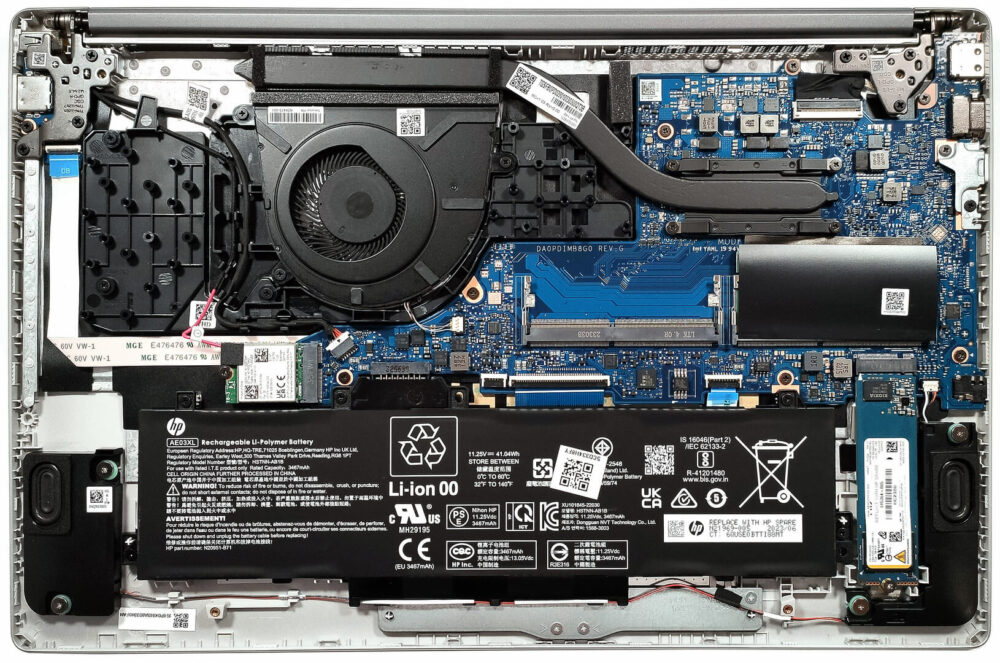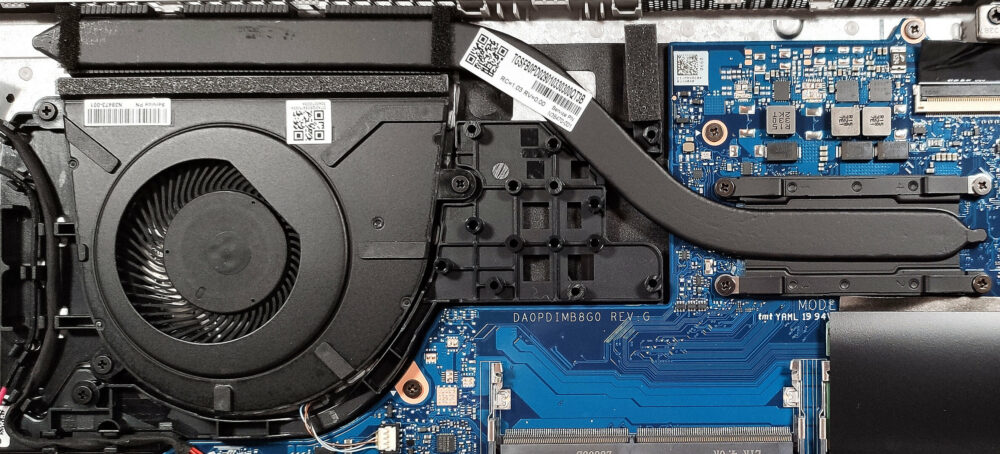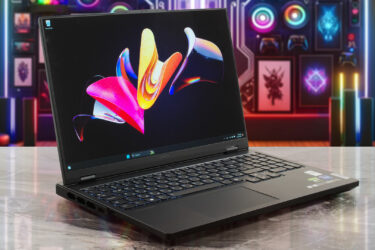How to open HP 250 G10 – disassembly and upgrade options
Step 1: Accessing the Internal Components
- Ensure the HP 250 G10 is powered off and placed on a soft, clean surface to prevent scratches or damage.
- Remove the four Phillips-head screws from the bottom of the laptop.
- Begin popping the bottom panel off, starting from the front, then continue working your way around the sides and the back.
Hint: Proceed with caution to avoid damaging the internal clips or the laptop casing.
Step 2: Removing the Battery
- Wear gloves to avoid short circuits and carefully disconnect the built-in battery connector.
- Remove the five Phillips-head screws securing the battery to the laptop’s chassis, then lift the 41Wh battery away from the device.
- Untangle the speaker cables from the battery housing to completely free the battery.
Caution: Handle the battery and its connector with care to avoid any damage.
More info: The 41Wh battery offers up to 8 hours and 20 minutes of web browsing or 7 hours and 42 minutes of video playback, providing reliable battery life for daily tasks.
Memory Upgrade
- Locate the two SODIMM slots available for memory upgrades.
- Install up to 32GB of DDR4-3200 MHz RAM in dual-channel mode to enhance the laptop’s multitasking capabilities and performance.
Hint: Dual-channel configuration maximizes the performance potential of the installed memory.
You can buy DDR4 RAM modules here: Buy from Flipkart.com
Storage Upgrade
- Identify the single M.2 slot compatible with Gen 4 SSDs on the motherboard.
- Upgrade the storage by installing a new NVMe SSD, utilizing the thin cooling pad under the preinstalled NVMe for optimal thermal management.
- Choose and purchase a new drive when needed. Don’t forget to check out our Top M.2 SSDs Performance Rankings.
You can buy Gen 4 M.2 SSD modules here: Buy from Flipkart.com
Examining the Cooling System
Review the cooling system, which includes one fan, a heat pipe, one top-mounted heat sink, and a heat spreader, designed to efficiently manage the thermal output of the device.















